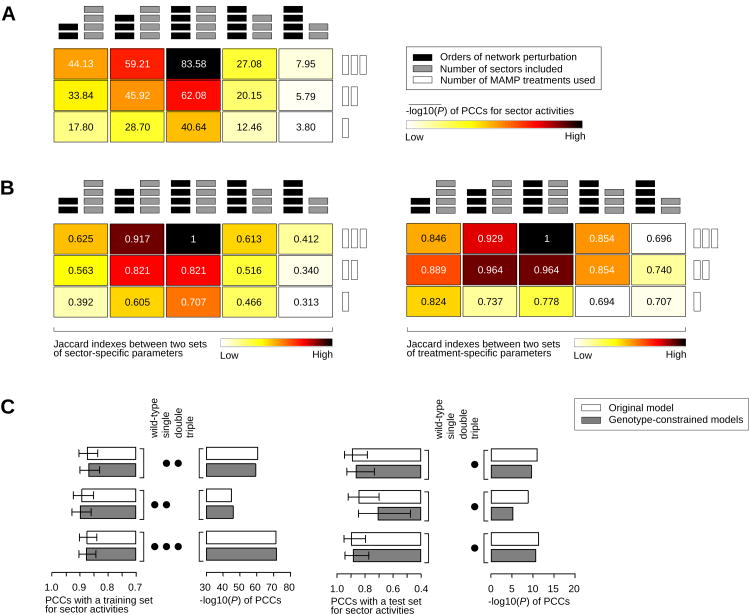Figure 6.
The multi-factorial nature of the dataset was important in obtaining a sector activity model with high predictive power. (A) Models having limited sectors or obtained with limited data have lower predictive power than the original model. The significance of the PCCs (-log10P) between the predictions of different models and the observed data are shown with darker colors for higher significances. The limited models were made with fewer signaling sectors (4, 3, and 2 sectors for the three right columns) or with datasets with lower orders of perturbations (up to triple, double, and single mutants for the three left columns) and with fewer MAMP treatments (3, 2, and 1 MAMP treatment(s), plus mock treatment, for the three rows). The average significance values for the limited models of the same class are shown. The middle cell in the top row represents the original model. (B) The structures of the limited models are substantially different from that of the original model. The Jaccard indices between the original model and the limited models used in (A) are shown. (C) Models obtained with lower orders of sector perturbation have poor predictive power of data collected from higher orders of perturbation. The PCCs between the model predictions and observed data for the triple mutants are shown. See also Figures S6 and S7.

